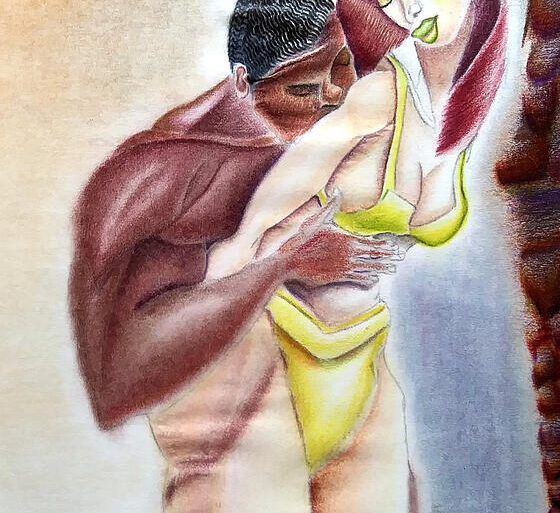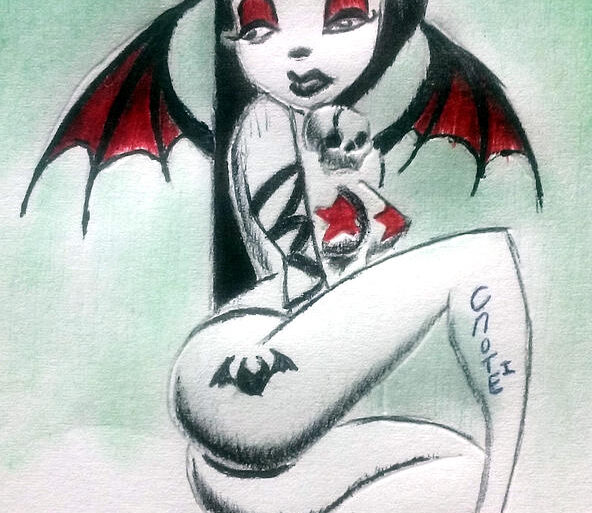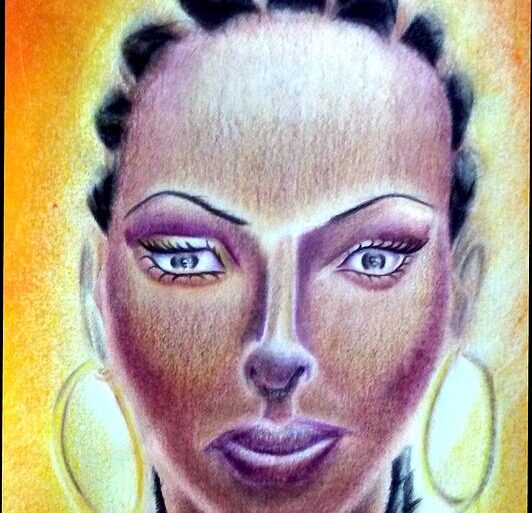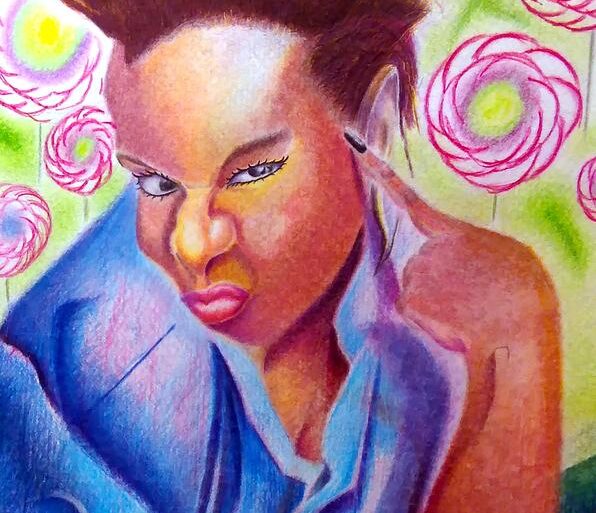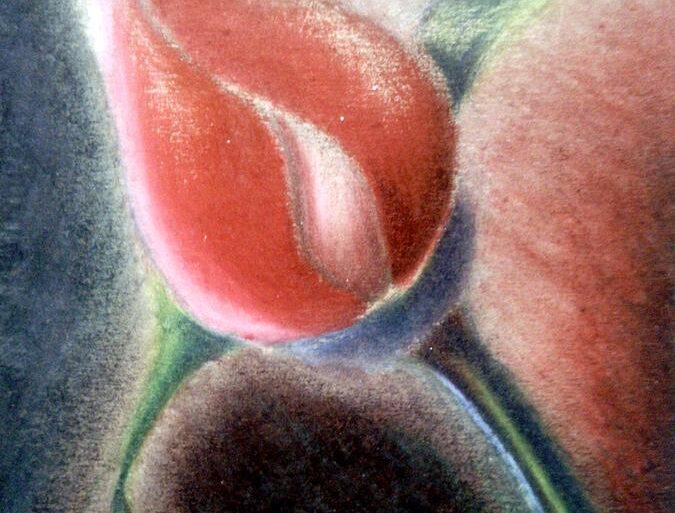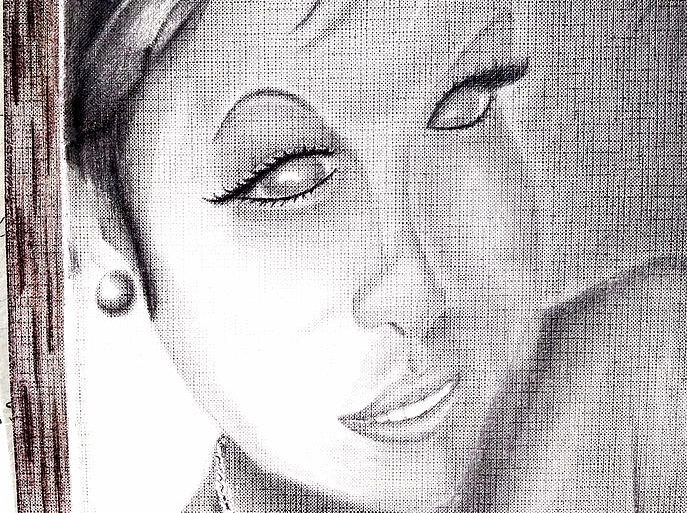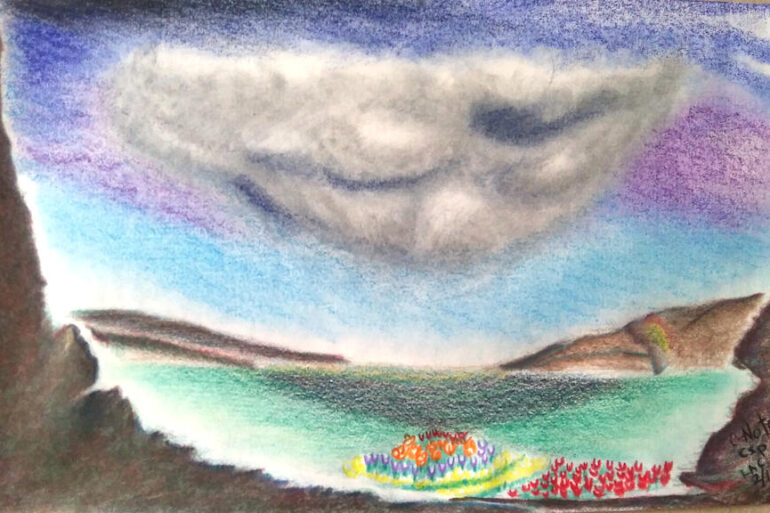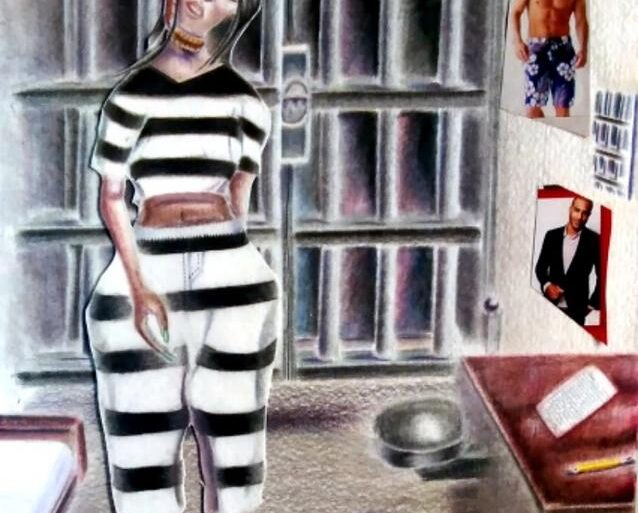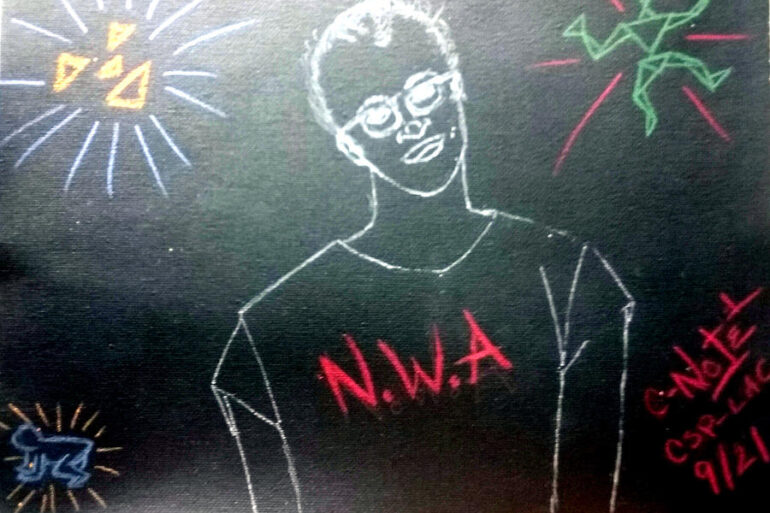Untitled Man Kissing Woman from Behind by Donald 'C-Note' Hooker
Description
The title of this work was inspired by the 1976, Disco song, "Heaven Must Be Missing an Angel." The song was recorded by the American R&B, funk and soul music group Tavares. It was released as the first single from their fourth album, Sky High!The image itself (Heaven Must Be Missing an Angel), is unrelated to the Tavares recording, but comes from a series of original tattoo patterns by prison artist C-Note that he felt would be appealing to his fellow California prisoners. One of the ways C-Note would survive in prison was to create original tattoo patterns for the prison culture that is dominated by gang culture. This particular work was inspired by and created for Halloween and El Dia de la Muerte.
Description
Of the 1M+ visitors to the Darealprisonart online art gallery, "The Light Of Amber" is amongst the most popular works of art. Created in 2015, the drawing is Wax, on a cardboard box prison lunch, and is featured in the online Artist Close-up, interview article of Donald "C-Note" Hooker."Western art is based on light," says prison artist C-Note. "Whether it's Fra Angelico and his gold leaf halos around his religious subjects, Rembrandt and his use of chiaroscuro, Claude Monet's impressionism in his haystack series, or "The Painter of Light," Thomas Kinkade, and his contemporary works of log cabins," they all highlight the value of light in Western art.
Description
La Reina de las Mujeres Chicas (The Queen of the Petite Women) is a graphite on paper of a young cigar smoking Mexican woman who's wearing a belt with bullets. The green ocean, red clouds, and white sky rendered with wax is an homage to the flag of Mexico and its people.
Description
Untitled (2024)8.5 in. x 5.5 inWax on paperDonald “C-Note” HookerColors: green, brown, blue, and grayShapes: circles and ovals Textures: smoothInspiration behind the work: An original work specifically created for the International online exhibition "Skies," March 1-31, 2024, curated by Colors of Humanity Art Gallery Technique: dry medium (wax)Cultural reference: Climate Comparisons: Other skyscapes by C-Note Artist intent: to create a shadow on land from a cloudscape that features a coulisse.For many, it may be difficult to wrap their minds around prisoners creating landscapes, when prisons are the ultimate gated communities of steel and concrete. Yet, American prison artist C-Note relies heavily on the natural world being his muse, without ever seeing that world up close, and in person.
Description
C-Note on Haring is a work of Wax on canvas. It was created to pay homage to his fellow artivist working in the underground art scene. Haring who died of AIDS complication at 31 in 1990, established the Keith Haring Foundation. The foundation's mandate is to provide funding and imagery to AIDS organizations and children’s programs. It also is to expand the audience for Haring’s work through exhibitions, publications, and the licensing of his images. After his death, the Contemporary Art World had become interested in Graffiti, and his Work have been given several international retrospectives.

